By Dr. Daniel P. Raymer
Often I am asked by high school and college students, or by recent graduates, what they should do to become an aircraft designer like me. I remember the feeling – when I was a teenager I was already crazy about airplanes, and was eager to be the next Kelly Johnson or Tom Swift.
It’s a good job. Airplanes are fun, and airplane people are among the nicest people I know. You get to satisfy both your creative and your analytical urges – like an artist using geometric equations to give perfect perspective to a painting. As a designer, you get to be in the middle of everything, and there is something really ego-satisfying about an entire team of people – sometimes hundreds – working on your design. Even when they find things wrong with it, it makes you feel special!
The pay is fine. Sports and music stars make a lot more money, but most “wanna-be’s” never make it in those fields. Anybody who works hard in aerospace will have a good career with very decent pay, eventually owning a nice house and car, and living an upper middle-class lifestyle. If you work for a big company or the government, the job security is pretty good, and even when there is an aerospace downturn the “advanced design” people are usually protected because they are needed to start the next big project. If you work for a small company or start your own, you’ll probably get paid less initially but will have greater opportunity for striking it rich – or going broke. Even so, you’ll have a great time, learn a lot, and improve your resume for the next job.
By the way, I know some designers and engineers who actually have gotten rich. Some were lucky enough to invent something and make it pay, others started their own companies, but most used the steady income of their engineering careers to finance other investments, especially real estate. One guy quietly worked as an engineer for 30 years, while buying little houses and renting them out, getting up in the middle of the night to fix broken toilets and such. Those little houses were in a place called Manhattan Beach, California. He doesn’t have to fix toilets these days…..
If you really want to design airplanes, follow Raymer’s Rules for Would-Be Aircraft Designers (presented below in approximately chronological order):
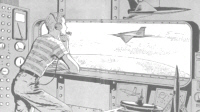
1. Get Good Grades in High School
That means B’s or better. Sorry, but if you can’t do better than C’s you should consider other career options. Take all the math and science your school has, then beg to take more at a local junior college. The most important subjects are geometry, trigonometry, calculus, and physics. If you don’t get all of those in high school you can take them in college, but you’ll jump out ahead of the pack if you’ve already taken them. If offered, take Computer-Aided Design (maybe at the local adult education program). Take some English classes that focus on writing skills, including composition and grammar. You could also take a class in public speaking, to learn how to communicate your great ideas to other people.
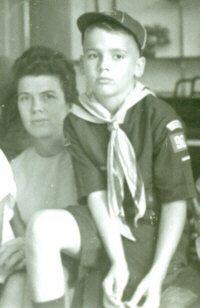
2. Hang Out Around Airplanes
Go to airports and talk to people. You might find pilots working on their own airplane – offer to lend a hand. Go to museums and airshows. Perhaps join Civil Air Patrol, or Junior ROTC. Join the Experimental Aircraft Association (EAA) – you get their great magazine, and it looks good both to get into a university and to get a job afterwards. Many EAA local sections have a building project that always needs helpers – why not you?
Forgive the crass commercial plug, but high school students interested in aircraft design might want to get a copy of my book, Simplified Aircraft Design for Homebuilders. It presents real design methods but at a less-than-college level, and warms you up for my big textbook which you’ll probably use when you are in college.
You may also be interested in my newest book, “Living In The Future: The Education and Adventures of an Advanced Aircraft Designer”. This non-technical book covers my education, career, and design projects, and gives you an idea of what it is like to become and be an advanced aircraft designer.
My next book is being aimed directly at you. The working title is Aeronautics and Astronautics for High School and I hope to have it out early next year. No promises, though…

3. Build and Fly Model Airplanes
Make radio controlled models if you have the money, but even free-flight gliders are fun and teach a lot about design. Don’t just build kits or stick together “ARFs” – do your own designs. Try different things. Figure out how to make a strange design stable, explore the problems of flying wings, make a canard design work, etc… BTW, if you are new to radio controlled airplanes, get a PC-based flight simulator program and fly it in “from the ground” view. This teaches you the strange backwards controls needed when the plane is flying towards you.

4. Get your Pilot’s License
…or at least take a private pilot’s ground school class. Many towns have it in adult education night school, which is where I took it when I was 15. If possible, take flying lessons (I worked as a cook to pay for it). You could learn how to hang glide.
5. Take a Shop Class
I had to fight with my high school to get permission since they thought that shop class was only for “dumb” kids, but it really helped me to understand what it takes to actually build something. I had a good time, too. I especially liked working the metal lathe. It is also a good idea to work on cars or motorcycles – buy an old junker and fix it up. Another possibility – take aircraft mechanic classes at the local adult education program.
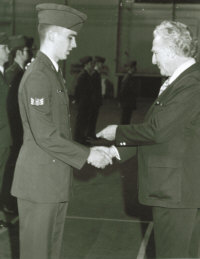
6. Go to the Best Possible Aeronautical Engineering University
Major in Aeronautical Engineering or in Mechanical Engineering with an Aeronautics track. If you want to be a “real” designer, actually doing the initial layout design of new airplanes, there are several great schools to consider. Certainly University of Kansas is a strong contender (Jan Roskam headed their design program), also Purdue (my school), Cal Poly San Luis Obispo (where Burt Rutan went), University of Michigan (where Kelly Johnson went), Parks – St. Louis, University of Washington, and the University of Southern California. Click here for a fairly complete listing of universities with design programs.
One thing to look for – does the professor who teaches aircraft design have actual industry design experience? It usually helps, although I do know some excellent design professors who never worked in industry but have learned the industry methods anyway. Another thing to ask about – does the university participate in the AIAA student design competitions? Do they win?
If you want to go the more theoretical route, consider Cal Tech, MIT, or Stanford – assuming your grades are tops. With those degrees, you’ll be “blue chip” for the rest of your life. Georgia Tech has a good program for would-be designers that is strong on advanced optimization methodologies – the wave of the future for designers. University of Maryland has long been known for hypersonics work.
And yes, get good grades. It really matters.
While at college, try to get involved in wind tunnel testing if your school has one. If not, build your own – be creative! In addition to all the usual courses, take CAD classes. It would also be wise to take writing and speech classes. Communication is very important in engineering, and many engineers seem to have perpetual writers’ block.
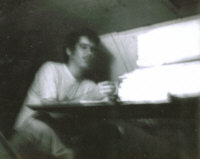
7. Deliberately Build Your Resume Even While in School
All college graduates have a college degree. Duh! Some graduates have a lot more on their resume. Join AIAA, and maybe SAE, IEEE, and SAWE just for luck. Become a student chapter officer. Here’s a good idea – grab the position of organizing the outside speakers. You’ll have an excuse to contact important engineers all over the country to see if they will come speak – and even if they don’t, you can send them a resume when you graduate!
Give student papers, and enter the various student paper competitions. Write something for the AIAA Student Journal if you can.
You should also try to get as much “real world” experience as possible. Even if you don’t need the money, you should get a part-time job in something related to engineering, such as being a lab or research assistant. Or, try to find a job that sounds managerial. (But please, don’t put “transportation coordinator” on your resume when you were really delivering Pizza. We aren’t that stupid, and nobody likes being lied to.)
A summer internship at the right place can set you up for a great job later. Try to get one at a major aerospace company, or a government agency like NASA, or a small engineering company that contracts with them. You’ll learn a lot and have networking opportunities, meeting people who may help you find a permanent job later. Work-study programs are excellent (especially if you do need the money). It is common for promising interns to be offered real jobs when they graduate, and common to offer them slightly higher pay as well since their true work abilities are know.
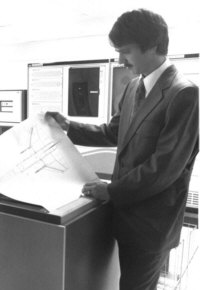
8. Get an Advanced Degree
In the old days, many great designers had little formal education. My first boss in the Advanced Design Group of North American Aviation (Rockwell) didn’t have one. He may not even have graduated from High School, but that didn’t stop him from doing the configuration design of the X-15.
Those days are over – the technologies are too sophisticated, the design tools are too complicated, and the competition is too intense. You still need to love airplanes, and you still need the mythical “designer’s eye”, but you also need an excellent education to succeed as a designer.
Get a Masters degree in aeronautical engineering, either immediately after your BS or after about 5 years of work experience. Go to the best university you can, but any MS is better than no MS.
A PhD is desirable for the theoretical or methods development areas, and is mandatory for a career in academia. The schools mentioned above are all great for a Ph.D. program, as are many others, and any Ph.D. is better than no Ph.D. (obviously, must be in engineering).
If you want to be a “real” designer, actually laying out the new airplane, then the PhD is nice but not essential. Actually, some think that a Ph.D. may hurt you by making you “overqualified” to be “just a designer” in some people’s minds. I think that is foolish – the whole purpose of aeronautical engineering is to create a good design, so the people actually doing the design layout should be the best of the best, not glorified draftsmen. This argument has been going on for a long time.
In my own case, I “dropped out” of Purdue’s Ph.D. program with “just” a Masters Degree when North American offered me my dream job – a drafting table in Advanced Design. My major professor is still mad at me – he had to find another grad student to work his contract. I finally got my Ph.D. fairly recently, after 20 years in design.
Another option – some business courses or even a business degree might help out should you some day start your own aircraft company. I earned an MBA going to night classes at USC early in my career, and I think it helped a lot getting promotions to management.
9. Work the Back-Door Hiring Game
When you are near graduation, try to find contacts who are actually in the design departments of aircraft companies or government agencies. While you will have to work through the personnel department eventually, a direct contact with the design department manager is far more likely to get you the job you want than just sending resumes in the “front door.” How do you find them? Hint – those people give technical papers at AIAA meetings on related topics, and they are often on the AIAA Technical Committees.
When you interview or talk on the phone, be committed to becoming an aircraft designer and exude enthusiasm. Talk about something airplane-related that you have done. I’d rather hire someone who really loves airplanes and airplane design, than hire someone who has better grades but doesn’t share my enthusiasm.
10. Then, follow Raymer’s Rules for New Grads
Really. They are important. They’ll help you get ahead, and may keep you out of trouble. One recent reader from abroad describes them as “admittedly spot-on.” I think this means that they are useful. So, click here.
So, those are Raymer’s Rules for Would-Be Aircraft Designers. I hope they help. You’ll find more design-related information and thoughts at my Aircraft Design Website, including a list of Aerospace Acronyms & Abbreviations and a useful Generic Report Format. You’ll also find some sample design layouts, links to aerospace websites, and a listing of books that I recommend for designers.
I wish you the best of luck. It’s a fun career. I wouldn’t do anything else!